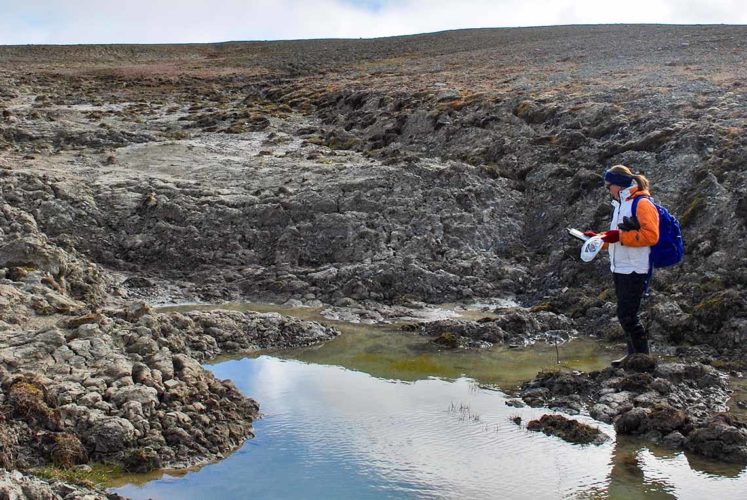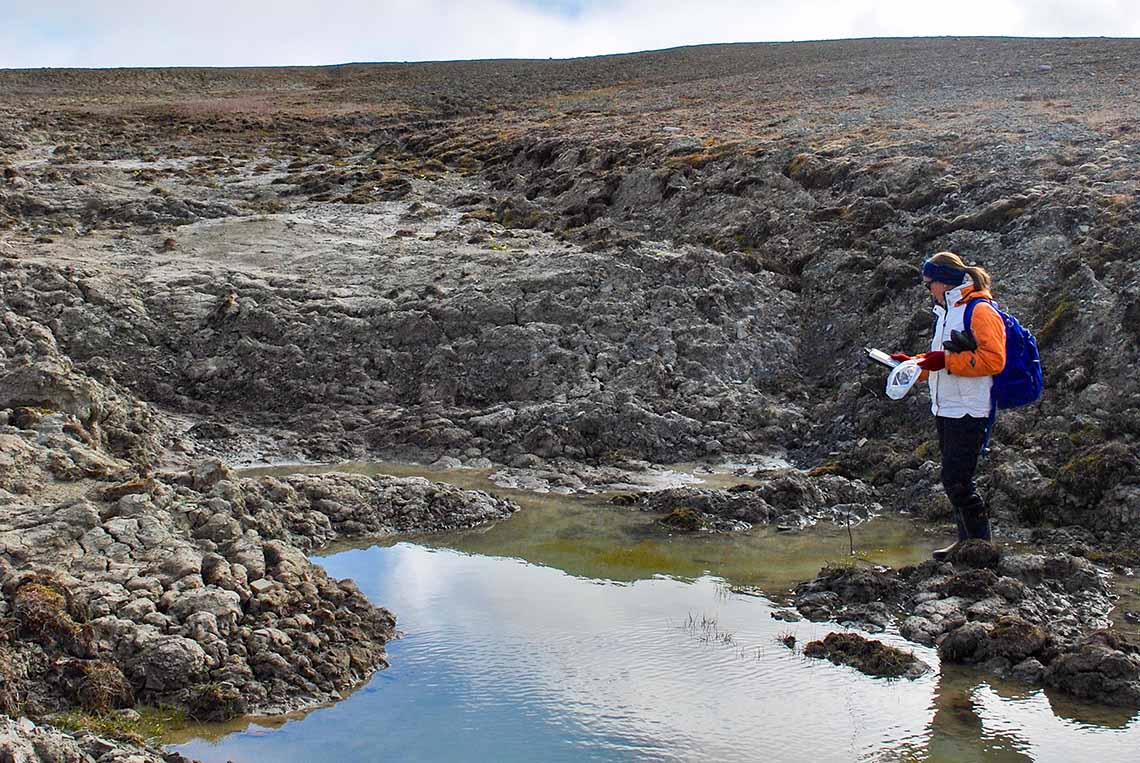A study released last week from the University of Toronto has uncovered new insights into the role of Arctic freshwaters in the global carbon cycle.
The study looked at how dissolved organic carbon (DOC) stored in Arctic permafrost, which is being released into Arctic watersheds as a result of physical disturbances that relocate nutrients across the landscape. Researchers found that the chemical composition of carbon in these ponds is substantially different than in rivers in the High Arctic.
“These ponds in the High Arctic seem to be hotspots for DOC degradation,” said Myrna Simpson, professor of Environmental Science at U of T Scarborough and co-author of the research. “Very little consideration has been given to what’s happening with DOC in these ponds that are all over the Arctic, and it could potentially be a source of CO2 emissions released into the atmosphere with these disturbances.”
In the High Arctic DOC becomes mobile by entering watersheds, which is happening at an accelerated rate due to rapid permafrost thaw and the resulting change to the physical landscape. While past studies have explored how active layer detachments have stimulated microbial activity in Arctic soil, this is the first to look mostly at water sources including ponds.
“We didn’t measure how much carbon was being released, because we didn’t expect to find this,” said Simpson. “This is one of the novel findings of the study—that these ponds could play an important role in the global carbon cycle.”

An important next step for the research will be to see how widespread the phenomenon is, for example if it happens in all Arctic ponds. Melissa Lafrenière, an assistant professor at Queen’s University, who conducted sampling of the water sources for the study noted the importance of understanding the underlying mechanisms driving the difference between DOC in Arctic ponds versus rivers.
“We need to do some mass balance studies to figure out the mass of carbon in these bodies of water. This includes how much carbon is present, and what are the main inputs and outputs controlling how much carbon is in the water,” said Lafrenière.
In order to do that, they will need to measure not only the amount of carbon in the water but also the different forms of carbon including DOC, dissolved inorganic carbon, particulate organic carbon, gaseous CO2, and methane.
A complimentary study from the University of California, Irvine, found that Arctic lakes are releasing relatively young carbon. “This finding is crucial, because much of the biomass stored underground in the Arctic is ancient, dating back to the Pleistocene Epoch, which ended more than 11,500 years ago,” said Claudia Czimczik, UCI associate professor of Earth system science, who led the study, Greenhouse gas emissions from diverse Arctic Alaskan lakes are dominated by young carbon. “When the bulk of that very old carbon is recycled and released, we will be looking at a massive net increase in emissions of the gases that worsen global warming.”









